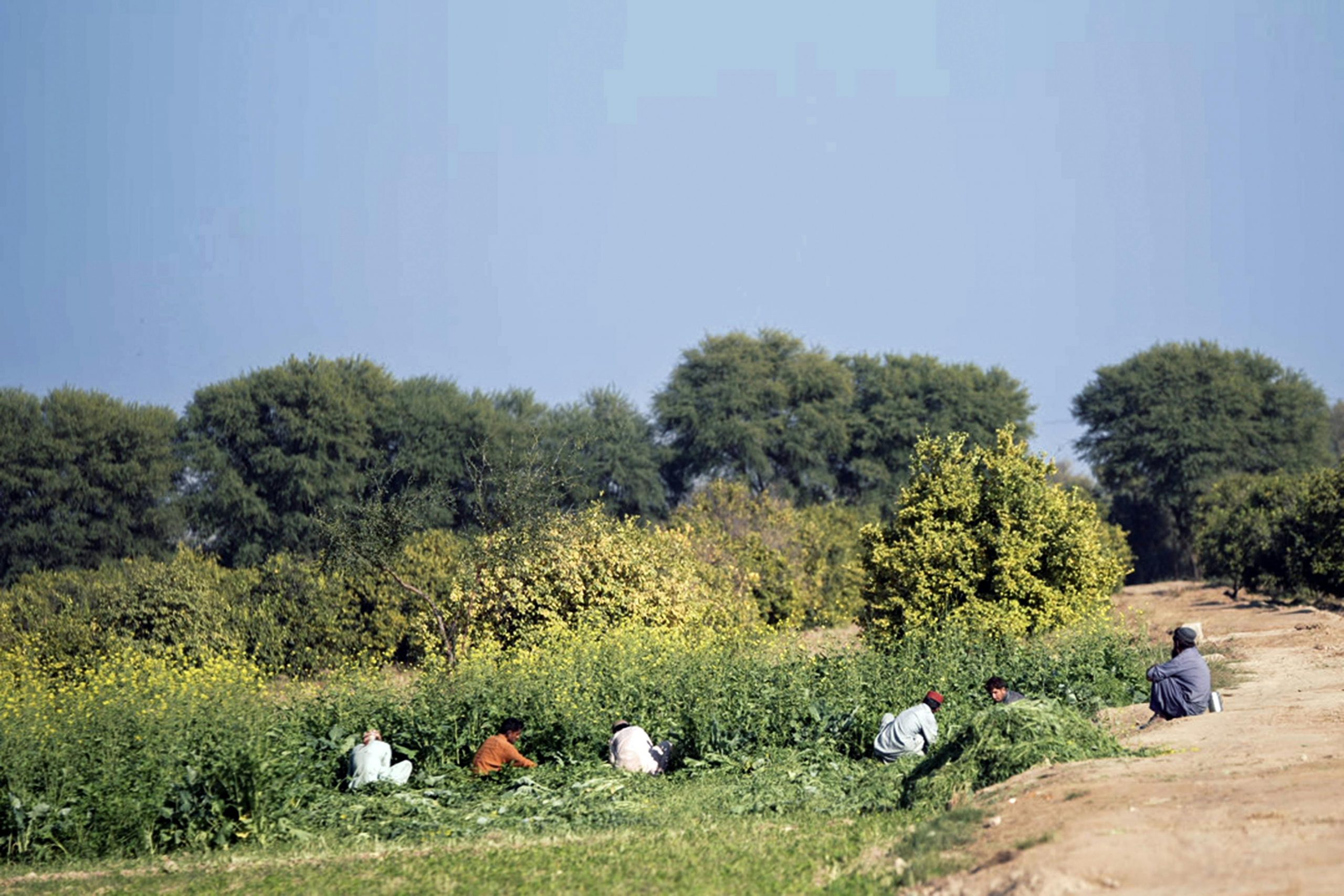“In the last 60 years Pakistan’s economy has crashed 13 times and every time it crashes, it requires a bailout from the International Monetary Fund,” remarks Professor Atif Mian during one of his recent talks at Institute of South Asia Studies at UC Berkeley[1]. The given statement outlines a grim picture on the state of Pakistan’s economy, one that is not ordinary and in dire need of structural reforms. Professor Mian has identified low investment rates, weak balance of payment, and fiscal and liquidity problems as four problem areas that demand attention in order to understand the economic setback that Pakistan faces today.

The macroeconomic ramifications of past governments and their policies and actions over the decades is well reflected in the economic indicators of 2019 as well.
According to the quarterly report [2] published by State Bank of Pakistan, Pakistan’s fiscal deficit deteriorated from July-March 2019 as compared to FY 2018. The CPI inflation averaged at 6.8 and real GDP at 3.3. These economic indicators showcase the structural deficiencies and its vulnerabilities to the build-up of external and internal deficits Pakistan face today. (Reference Table 1.1)
The country’s import bill reduced as a result of import compression in FY 2019 introduced by the current government to stabilise the economy. Nonetheless, improvement in trade deficit coupled with healthy growth in workers’ remittances resulted in reduction of current account deficit from US$ 13.6 billion in Jul-Mar FY 18 to US$ 10.3 billion in Jul-Mar FY 19.
Interest rate’s hike and exchange rate’s depreciation emphasised the rigidness of current expenditures where revenue mobilisation remained weak due to stagnant tax revenues and steep fall in non-tax revenues only resulted in slowdown of economic activity.
With the stabilisation measures in place, the given economic indicators emphasise that current measures need to be reinforced with deep rooted structural reforms. Reforms in fiscal sector such as broadening of tax base, reduction in untargeted subsidies, and withdrawal of discretionary tax exemptions and privatisation/restructuring of loss making Public Sector Enterprises (PSEs) are vital for economic recovery[3].
So, what is the reason behind Pakistan’s repeated macroeconomic crisis?
Pakistan’s macroeconomic [4] mismanagement is consequential to two foremost causes a) The imbalance between public sector spending and income and b) Pakistan’s weak export base which makes the country vulnerable to the external sector.
As compared to other emerging markets, Pakistan’s income from taxes, fees, and other sources is strikingly low which leads to an imbalance between income and expenditure. Despite constant government efforts to improve tax policy and administration, Pakistan’s Tax to GDP ratio remains low, below the middle-income countries (MICs) average of around 18.5 percent[5]. High proportion of taxes collected through indirect taxes and the small number of individuals who file income tax returns are some of the features of our tax structure leading to low revenue collection.
In context of public spending both current and capital spending by federal and provincial governments can be dramatically improved. Persistent losses made by some public sector enterprises, and the even larger losses made in the energy sector, provide additional scope for improving public finances. Low level of expenditure on health and education causes Pakistan to lag on many development indicators. Hence rationalising and improving the effectiveness of public expenditure is need of a dire review.
The second source of macroeconomic vulnerability is the external sector with low level of exports. The declining balance of trade over the years puts Pakistan on a trajectory of increasing deficits[6].

Adding up the total value of the exports of all countries in the world, Pakistan’s share has declined over time, from 0.16 per cent in 2003 to 0.12pc in 2017, according to the Pakistan Business Council. The underlying cause for low level of exports is that Pakistan has limited number of categories to export. As for economic growth Pakistan needs to diversify its categories of exports and explore opportunities to serve new markets.
How is Pakistan tackling its current macroeconomic crisis?
The recent political transitioning and macroeconomic crisis has put Pakistan under constant vigilance from spectators and lending institutions alike. As seen by aforementioned data and statistics, the current government inherited a challenging economic situation that demanded structural reforms to ensure a stable economic growth. The financing gap of US$12 billion demanded a bailout package from the International Monetary Fund (IMF)[7].
To stabilise the economy and address the twin deficit (current account deficit and fiscal deficit) Pakistan signed its 22nd IMF bailout package of US$6 billion in light of challenging economic environment, with lack luster growth, elevated inflation, high indebtedness, and a weak external position[8].
With another IMF programme in line one would ask the reason behind why the past IMF programmes failed to address the macroeconomic vulnerability? The answer is simple as IMF programmes do attempt to address the structural issues, IMF engagement is more effective at addressing short-term problems of macroeconomic instability. IMF role is limited in promoting longer-term actions to address underlying structural issues.
In a recent policy dialogue, Unlocking Pakistan’s Growth: What can macro policy achieve, an inaugural event part of Pakistan Development Forum 2019 answered these questions based on evidence. The event was co-hosted by Centre for Economic Research in Pakistan (CERP) and Evidence Policy Design (EPoD) at Harvard Kennedy School. Top government officials, Adviser on Finance Dr. Hafeez Shaikh and Governor State Bank of Pakistan, Dr. Reza Baqir, shared the panel with leading Harvard faculty Dr. Asim Khwaja, Sumitomo_FASID Professor of International Finance and Development, director of Harvard’s Center for International Development (CID), and Dr. Carmen Reinhart, Minos A. Zombanakis Professor of the International Financial System and a former deputy director of the IMF. The interactive public event, held at Harvard University, witnessed a well-rounded discussion to understand and evaluate the effectiveness of economic stabilisation measures taken by the Government of Pakistan.
According to Governor Reza Baqir, the current IMF programme has led two institutional changes. First, a shift from a fixed exchange rate system to a flexible exchange rate system and secondly, for the first time Pakistan’s government is not borrowing from State Bank of Pakistan.
“In 2014 the current account deficit of Pakistan was in balance, but grew to unprecedented level of US$2 billion per month, making it the largest deficit in Pakistan’s history. Simultaneously a fixed exchange rate policy led to a heavy reserve loss” stated Governor Baqir. “Since 2018, when the real effective exchange rate began to depreciate through a series of devaluations, the current account deficit began to turn around. It has now halved from its peak,” he shared. He added, “The IMF programme comes at the end of this time horizon (exemplifying through data on inflation and policy rate over the years), which is to say that a lot of the external adjustment has been done before the start of the programme.” This is a strong indicator of success of the programme.
Stating fiscal deficit as another other key cause of requiring external financial assistance, Governor Baqir said, “The fiscal adjustment is off to a good start, tax revenues have already begun to grow after having fallen for a number of months.” On inflation, Governor Baqir noted that “factors like exchange rate adjustments and the fiscal adjustment that is under way with associated increase in taxes and utility prices—adjustments that were necessary to address the accumulated imbalances of the past—led to an increase in inflation, which necessitated a tightening of interest rates.”
From the federal government’s perspective Dr. Shaikh enlisted key development facts associated with Pakistan pertaining to its complex geography, poor strategic alliances, short-lived and unsustainable growth spurts, and inability to engage women to contribute to the economy to highlight the situation of the country.
Dr. Shaikh showed confidence in the measures taken by the current government to revive and stabilise Pakistan’s economy while emphasising the importance of strengthening institutions and giving them autonomy. “As a result of tough decisions, we are seeing good initial results. The current account deficit was brought down by 30% last year, and exports are finally beginning to pick up as a result of targeted support by the government”. He also pointed out that both tax revenues and spending on social safety net programmes have risen in the current administration.
Leading the academic perspective Professor Reinhart, former Deputy Director of the IMF, identified ‘Low Saving Rate’, prevalent in many emerging markets, as an additional challenge for Pakistan. According to her, the issue of hidden debts is a usual source of weakness during a financial crisis and as per her experience private sector liabilities convert into public liabilities which should be a note of caution to the government officials. “After a couple of good years, you begin to treat the favourable growth environment as permanent and you overspend. Something happens, your budget deficit is larger than planned, and financing from the bank becomes the norm. That of course means downward pressure on the reserves. … Don’t get overly optimistic; don’t think that the good news is permanent, and limiting borrowing is, in addition to a floating exchange rate, a safeguard to maintaining reserves,” added Professor Reinhart.
The real solution to become a stable economy in case of Pakistan is a long-term plan and a consensus on what kind of economy it wants to achieve in next 10-20 years. As a country Pakistan needs to abstain from the short-termism or myopia and focus on building domestic capacity/productivity and institutions to avoid the recurring economic crisis it sees today.
Lareeb Tariq is a Communications Associate at Centre for Economic Research in Pakistan (CERP)
References:
[1] What to do about Pakistan’s Economy: Dr. Atif Mian’s talk on The 7th Mahomedali Habib Distinguished Lecture on Pakistan
[2] The State of Pakistan’s Economy. Third Quarterly Report 2018-2019 by State Bank of Pakistan
[3] The State of Pakistan’s Economy. Third Quarterly Report 2018-2019 by State Bank of Pakistan
[4] Center for Global Development: Why does Pakistan have repeated economic crisis by Masood Ahmed
[5] For the year 2014. Source: IMF World Revenue Longitudinal Dataset. The list of middle-income countries can be found at the World Bank’s country income classifications webpage available at: https://datahelpdesk.worldbank.org/knowledgebase/articles/906519
[6] The Analytical Angle: How data can help Pakistan fix its trade imbalance by Maroof A. Syed and Maha Rehman: https://www.dawn.com/news/1494806
[7 and 8] https://www.dawn.com/news/1481849/pakistan-reaches-agreement-with-imf-to-receive-6-billion-over-3-years




